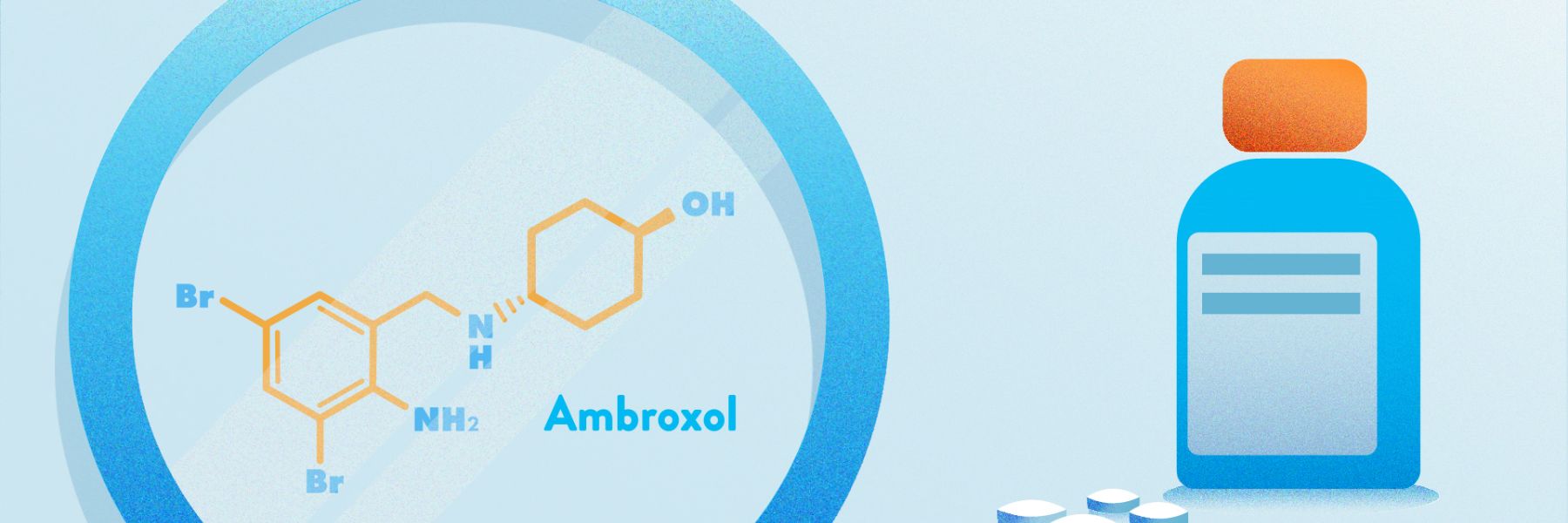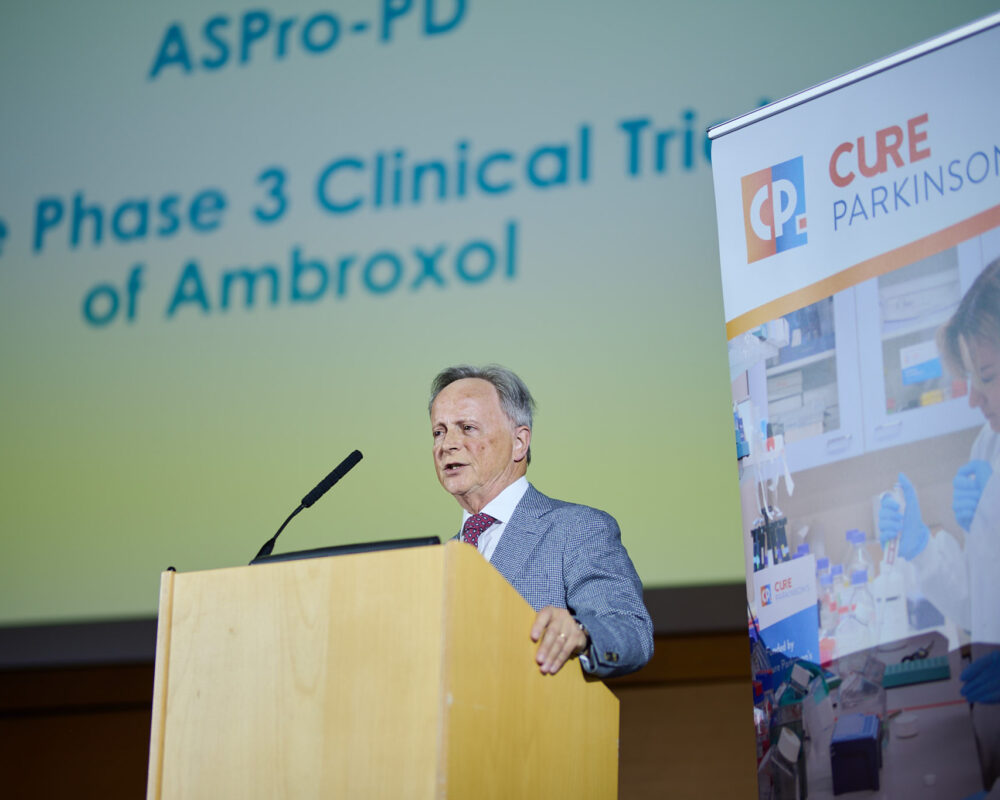ASPro-PD, or Ambroxol to Slow Progression in Parkinson’s, is a phase 3 clinical trial looking to assess whether ambroxol, a cough medicine, can slow or stop the progression of Parkinson’s motor symptoms.
About the study
Led by Professor Anthony Schapira at University College London (UCL), this trial aims to recruit 330 people with Parkinson’s. Participants will take either ambroxol or a placebo (dummy drug) for two years. To measure changes in motor symptoms, the MDS-UPDRS Part III rating scale will be used.
A unique aspect to this trial is that around half of participants (165) will be carriers for a specific genetic variation associated with Parkinson’s: GBA1. This is because ambroxol is thought to increase activity of the enzyme associated with the GBA1 gene. Alongside the ASPro-PD trial, the online genetic study PD Frontline has also been set-up in order to pre-screen potential participants for GBA1 and LRRK2 variations, another Parkinson’s genetic risk factor. All participants for ASPro-PD will be recruited through PD Frontline.
This trial is being funded by Cure Parkinson’s alongside its strategic partners Van Andel Institute and the John Black Charitable Foundation, and by the Parkinson’s Virtual Biotech, the drug discovery and development arm of Parkinson’s UK. We would also like to thank the early supporters of this trial including Pears Foundation, Rosetrees Trust, The TJH Foundation and Frank Brake Charitable Trust.
Trial overview
- Researcher: Professor Anthony Schapira
- Institution: University College London
- Project Type: Clinical trial, phase 3
- Status: Active (Recruiting)
- Start Date: March 2025
- iLCT-evaluated: 2014
- Therapy Target: Cellular recycling/waste removal
More about the study
What is ambroxol?
Ambroxol is currently licensed as a cough medicine in some European countries. However, researchers believe it may also be able to rescue nerve cells (neurons) in people with Parkinson’s. Ambroxol targets an enzyme called GCase (glucocerebrosidase), which helps cells breakdown and clear waste. A characteristic feature of Parkinson’s is the build-up of toxic proteins, especially alpha-synuclein. These build-ups eventually lead to cell loss, driving Parkinson’s progression. Therefore, researchers hope that if ambroxol can increase GCase activity, it may be able to restore neuron health and slow Parkinson’s progression.
What is GBA1 and GCase?
GBA1 is the gene that provides cells with the instructions for building GCase. Individuals with small mutations in the GBA1 gene produce less GCase and are at greater risk of developing Parkinson’s. Therefore, researchers are interested in whether ambroxol may have a greater effect in people with GBA1 variations. GBA1 variations are the most common genetic risk factor for Parkinson’s, found in an estimated 10-15% people with Parkinson’s. Learn more about genetics and Parkinson’s (https://cureparkinsons.org.uk/parkinsons-genetics/).
Previous research
AIM-PD was a phase 2 clinical trial of ambroxol, funded by Cure Parkinson’s together with Van Andel Institute and the John Black Charitable Foundation. Led by Professor Anthony Schapira at UCL, this small open-label study saw 17 volunteers with Parkinson’s taking ambroxol for six months. The goal of the trial was to answer fundamental questions about ambroxol’s suitability and effectiveness as a potential treatment for people with Parkinson’s. The results of this study were published in 2020, demonstrating that ambroxol was able to reach the brain and there were some improvements in the motor symptoms of participants. The results were consistent across all trial participants, regardless of whether they carried a GBA1 variation.


